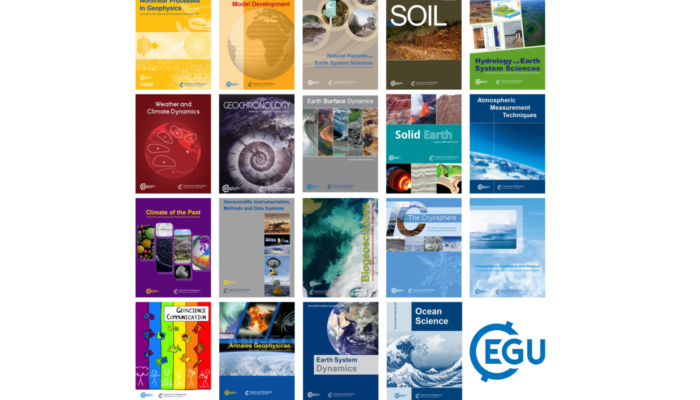
Each month we feature specific Divisions of EGU and during the monthly GeoRoundup we will be putting the journals that publish science from those Divisions at the top of the Highlights roundup. For December, the Divisions we are featuring are: Cryospheric Sciences (CR), Climate: Past, Present & Future (CL) and Nonlinear Processes in Geoscience (NP). They are served by the journals: Geoscientific Model Development (GMD), The Cryosphere (TC), Climate of the Past (CP), Earth System Dynamics (ESD), Weather and Climate Dynamics (WCD) and Nonlinear Processes in Geophysics (NPG).
Featured highlights
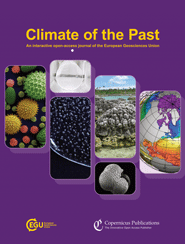 Millennial-scale atmospheric CO2 variations during the Marine Isotope Stage 6 period (190–135 ka) – 15 December 2020
Millennial-scale atmospheric CO2 variations during the Marine Isotope Stage 6 period (190–135 ka) – 15 December 2020
We reconstruct atmospheric CO2 from the EPICA Dome C ice core during Marine Isotope Stage 6 (185–135 ka) to understand carbon mechanisms under the different boundary conditions of the climate system. The amplitude of CO2 is highly determined by the Northern Hemisphere stadial duration. Carbon dioxide maxima show different lags with respect to the corresponding abrupt CH4 jumps, the latter reflecting rapid warming in the Northern Hemisphere.
The Pliocene Model Intercomparison Project Phase 2: large-scale climate features and climate sensitivity – 3 December 2020
The large-scale features of middle Pliocene climate from the 16 models of PlioMIP Phase 2 are presented. The PlioMIP2 ensemble average was ~ 3.2 °C warmer and experienced ~ 7 % more precipitation than the pre-industrial era, although there are large regional variations. PlioMIP2 broadly agrees with a new proxy dataset of Pliocene sea surface temperatures. Combining PlioMIP2 and proxy data suggests that a doubling of atmospheric CO2 would increase globally averaged temperature by 2.6–4.8 °C.
Evaluation of Arctic warming in mid-Pliocene climate simulations – 22 December 2020
The simulations for the past climate can inform us about the performance of climate models in different climate scenarios. Here, we analyse Arctic warming in an ensemble of 16 simulations of the mid-Pliocene Warm Period (mPWP), when the CO 2 level was comparable to today. The results highlight the importance of slow feedbacks in the model simulations and imply that we must be careful when using simulations of the mPWP as an analogue for future climate change.
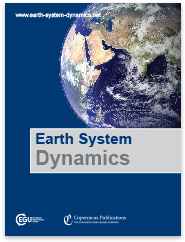 Reduced global warming from CMIP6 projections when weighting models by performance and independence – 14 December 2020
Reduced global warming from CMIP6 projections when weighting models by performance and independence – 14 December 2020
In this study, we weight climate models by their performance with respect to simulating aspects of historical climate and their degree of interdependence. Our method is found to increase projection skill and to correct for structurally similar models. The weighted end-of-century mean warming (2081–2100 relative to 1995–2014) is 3.7 °C with a likely (66 %) range of 3.1 to 4.6 °C for the strong climate change scenario SSP5-8.5; this is a reduction of 0.4 °C compared with the unweighted mean.
Geoscientific Model Development:
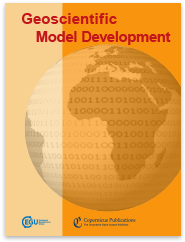 European daily precipitation according to EURO-CORDEX regionalclimate models (RCMs) and high-resolution globalclimate models (GCMs) from the High-Resolution Model Intercomparison Project (HighResMIP) – 11 December 2020
European daily precipitation according to EURO-CORDEX regionalclimate models (RCMs) and high-resolution globalclimate models (GCMs) from the High-Resolution Model Intercomparison Project (HighResMIP) – 11 December 2020
Now that global climate models (GCMs) can run at similar resolutions to regional climate models (RCMs), one may wonder whether GCMs and RCMs provide similar regional climate information. We perform an evaluation for daily precipitation distribution in PRIMAVERA GCMs (25–50 km resolution) and CORDEX RCMs (12–50 km resolution) over Europe. We show that PRIMAVERA and CORDEX simulate similar distributions. Considering both datasets at such a resolution results in large benefits for impact studies.
Review article: Geothermal heat flow in Antarctica: current and future directions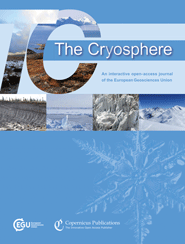 – 9 December 2020
– 9 December 2020
The Antarctic ice sheet is the largest source for sea level rise. However, one key control on ice sheet flow remains poorly constrained: the effect of heat from the rocks beneath the ice sheet (known as geothermal heat flow). Although this may not seem like a lot of heat, beneath thick, slow ice this heat can control how well the ice flows and can lead to melting of the ice sheet. We discuss the methods used to estimate this heat, compile existing data, and recommend future research.
Distinguishing the impacts of ozone and ozone-depleting substanceson the recent increase in Antarctic surface mass balance – 18 December 2020
The increase in Antarctic surface mass balance (SMB, precipitation vs. evaporation/sublimation) is projected to mitigate sea-level rise. Here we show that nearly half of this increase over the 20th century is attributed to stratospheric ozone depletion and ozone-depleting substance (ODS) emissions. Our results suggest that the phaseout of ODS by the Montreal Protocol, and the recovery of stratospheric ozone, will act to decrease the SMB over the 21st century and the mitigation of sea-level rise.
The catastrophic thermokarst lake drainage events of 2018 in northwesternAlaska: fast-forward into the future – 30 December 2020
In summer 2018, northwestern Alaska was affected by widespread lake drainage which strongly exceeded previous observations. We analyzed the spatial and temporal patterns with remote sensing observations, weather data and lake-ice simulations. The preceding fall and winter season was the second warmest and wettest on record, causing the destabilization of permafrost and elevated water levels which likely led to widespread and rapid lake drainage during or right after ice breakup.
The Antarctic sea ice cover from ICESat-2 and CryoSat-2: freeboard, snow depth, and ice thickness – 31 December 2020
Our current understanding of Antarctic ice cover is largely informed by ice extent measurements from passive microwave sensors. These records, while useful, provide a limited picture of how the ice is responding to climate change. In this paper, we combine measurements from ICESat-2 and CryoSat-2 missions to assess snow depth and ice thickness of the Antarctic ice cover over an 8-month period (April through November 2019). The potential impact of salinity in the snow layer is discussed.
Other highlights
Atmospheric Chemistry and Physics:
A microphysics guide to cirrus – Part 2: Climatologies of clouds and humidity from observations – 1 December 2020
Vertical variability of the properties of highly aged biomass burning aerosol transported over the southeast Atlantic during CLARIFY-2017 – 2 December 2020
Long-term historical trends in air pollutant emissions in Asia: Regional Emission inventory in ASia (REAS) version 3 – 4 December 2020
Sensitivity of the Southern Hemisphere circumpolar jet response to Antarctic ozone depletion: prescribed versus interactive chemistry – 21 December 2020
Atmospheric Measurement Techniques:
Validation of Aeolus wind products above the Atlantic Ocean – 10 December 2020
Investigating the sensitivity of soil heterotrophic respiration to recent snow cover changes in Alaska using a satellite-based permafrost carbon model – 28 December 2020
Earth Girl Volcano: characterizing and conveying volcanic hazard complexity in an interactive casual game of disaster preparedness and response – 17 December 2020
Focus on glaciers: a geo-photo exposition of vanishing beauty – 29 December 2020
Geoscientific Instrumentation, Methods and Data Systems:
Hydrology and Earth System Sciences:
New flood frequency estimates for the largest river in Norway based on the combination of short and long time series – 24 December 2020
Natural Hazards and Earth System Sciences:
A systematic exploration of satellite radar coherence methods for rapid landslide detection – 25 December 2020
Soil: the great connector of our lives now and beyond COVID-19 – 8 December 2020
EGU Science in the News
A snapshot of recent English-speaking news coverage based on research published in EGU’s 19 open access journals:
- Researchers say widespread lake drainage on tundra another sign of climate change Toronto Star
- Aerosols in Indo-Gangetic plain have led to increase in high rainfall in Himalayan foothills: Study The Tribune
- Climate-friendly cooling to help ease global warming – study The World News Monitor
- Mindu in Tibet: detecting precursors of an imminent landslide The Landslide Blog
- Norfolk woman has Antarctic glacier named after her Eastern Daily Press
- Bamber Glacier named for Bristol professor on 200th anniversary of Antarctica’s Discovery MyScience.org


